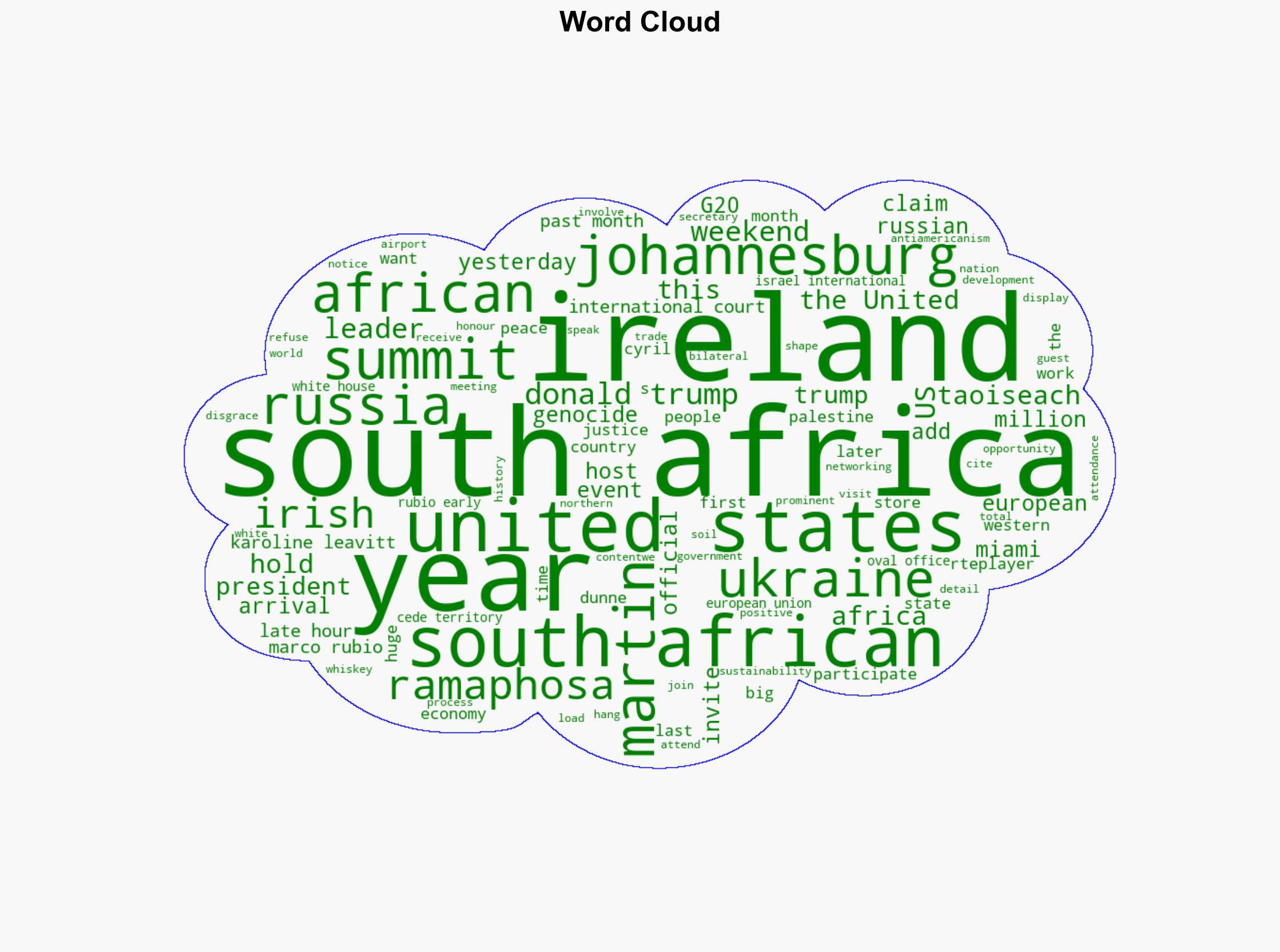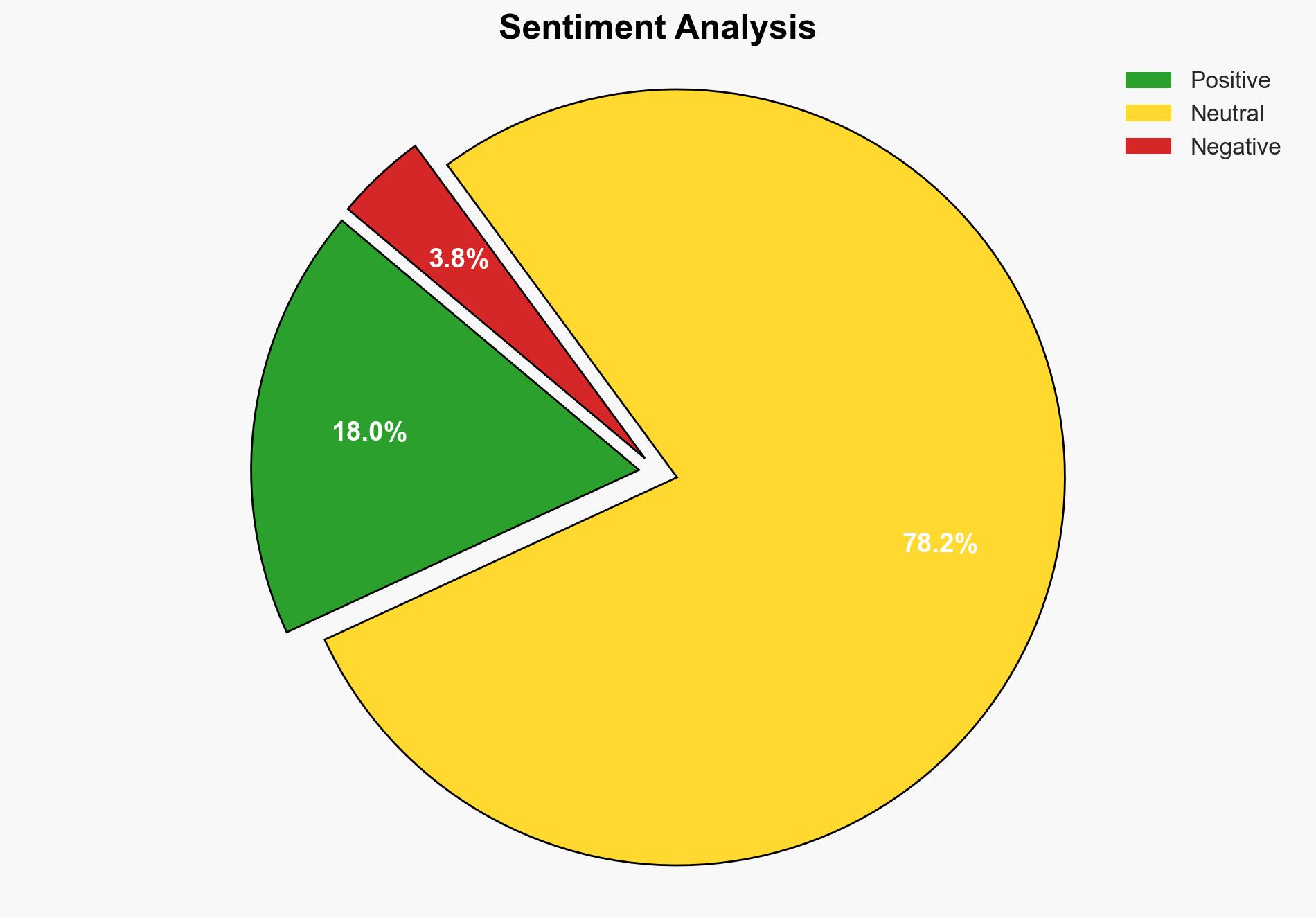World arrives in South Africa for G20 as US spat deepens – RTE
Published on: 2025-11-21
AI-powered OSINT brief from verified open sources. Automated NLP signal extraction with human verification. See our Methodology and Why WorldWideWatchers.
Intelligence Report:
1. BLUF (Bottom Line Up Front)
The strategic judgment is that the current diplomatic tension between the United States and South Africa, exacerbated by former President Donald Trump’s comments, poses a moderate risk to multilateral cooperation at the G20 summit. The most supported hypothesis is that the US-South Africa spat will not significantly derail the summit’s objectives but may strain bilateral relations in the short term. Recommended action includes diplomatic engagement to de-escalate tensions and reinforce multilateral commitments. Confidence level: Moderate.
2. Competing Hypotheses
Hypothesis 1: The US-South Africa diplomatic spat will significantly impact the G20 summit, leading to a breakdown in multilateral negotiations and cooperation.
Hypothesis 2: The spat will have minimal impact on the G20 summit’s overall objectives but may temporarily strain US-South Africa relations.
Hypothesis 2 is more likely due to the historical resilience of multilateral forums like the G20 in overcoming bilateral tensions, and the presence of other global leaders committed to the summit’s agenda.
3. Key Assumptions and Red Flags
Assumptions: Multilateral institutions have the capacity to withstand bilateral disputes; other G20 members will prioritize the summit’s agenda over bilateral tensions.
Red Flags: Escalation of rhetoric from either the US or South Africa; withdrawal of key participants from the summit.
Deception Indicators: Lack of transparency in communications from either party, or sudden policy shifts without clear justification.
4. Implications and Strategic Risks
The primary risk is a potential escalation of diplomatic tensions that could spill over into economic or political domains, affecting trade agreements or bilateral cooperation on global issues. A secondary risk is the potential for misinformation or propaganda to exacerbate tensions, particularly if leveraged by third-party actors.
5. Recommendations and Outlook
- Engage in proactive diplomatic dialogue with both US and South African officials to de-escalate tensions.
- Encourage G20 members to reaffirm their commitment to the summit’s objectives, emphasizing the importance of multilateral cooperation.
- Best-case scenario: The spat is resolved diplomatically, and the summit proceeds with a focus on key global issues.
- Worst-case scenario: The spat escalates, leading to a breakdown in negotiations and a weakened G20 platform.
- Most-likely scenario: The spat remains a background issue, with the summit proceeding largely as planned, albeit with some strain on US-South Africa relations.
6. Key Individuals and Entities
Micheál Martin: Taoiseach of Ireland, emphasizing multilateralism.
Donald Trump: Former US President, whose comments have sparked controversy.
Cyril Ramaphosa: President of South Africa, involved in the diplomatic spat.
Karoline Leavitt: White House Press Secretary, involved in the US response.
7. Thematic Tags
National Security Threats, Diplomatic Relations, Multilateral Cooperation, G20 Summit
Structured Analytic Techniques Applied
- Cognitive Bias Stress Test: Expose and correct potential biases in assessments through red-teaming and structured challenge.
- Bayesian Scenario Modeling: Use probabilistic forecasting for conflict trajectories or escalation likelihood.
- Network Influence Mapping: Map influence relationships to assess actor impact.
Explore more:
National Security Threats Briefs ·
Daily Summary ·
Support us





